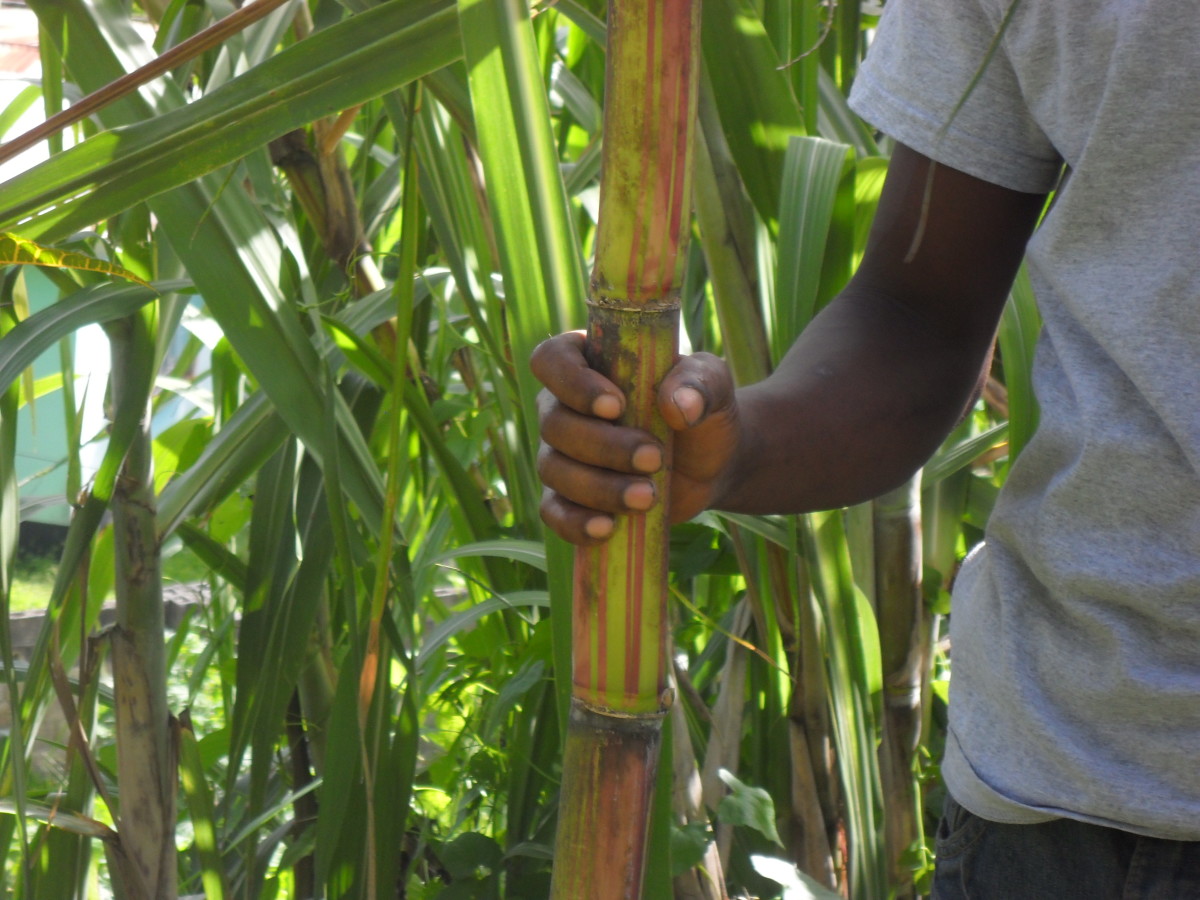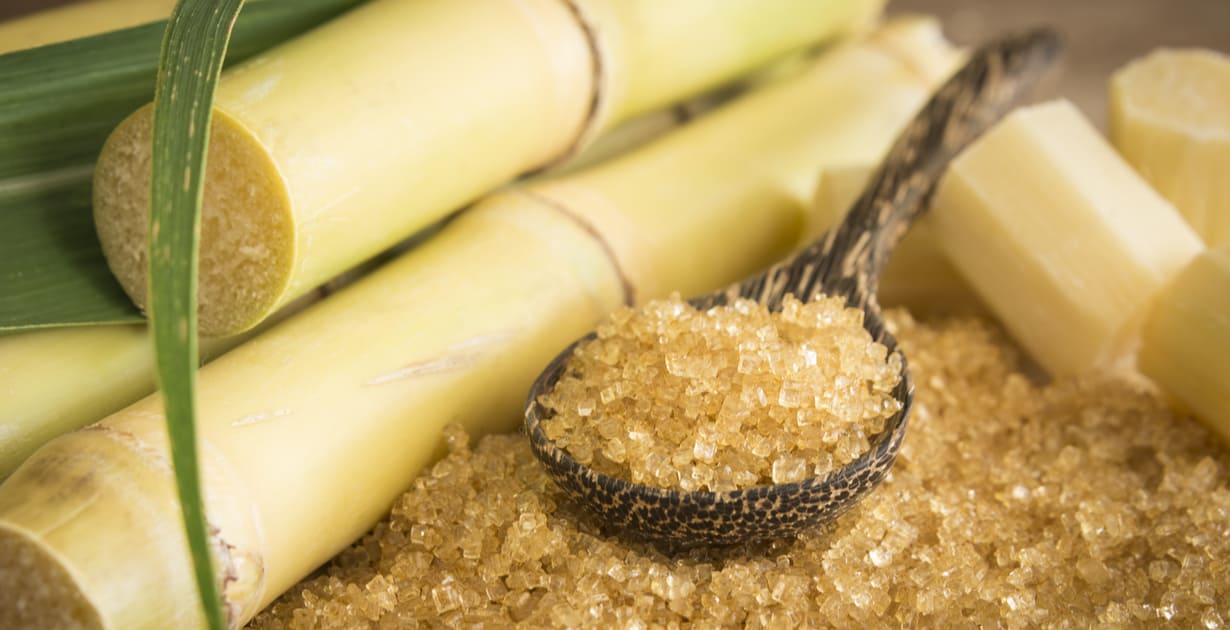Introducing the Significance of Sugar Canes: What Are Sugar Canes Made Use Of For in the Walking Stick Sugar Industry?
Sugar canes offer as the foundation of the cane sugar sector, mainly supplying the raw product needed for sugar manufacturing. Their capability to convert sunshine into sucrose via photosynthesis is important. Past their sweetening homes, sugar canes discover utility in various cooking applications and arising industries. The full extent of their effect expands beyond the kitchen area. This conversation will certainly check out the diverse duties of sugar walking canes in both industry and economic climate.
The Role of Sugar Canes in Sugar Manufacturing
Sugar walking canes act as the fundamental raw material in the walking stick sugar market, playing a vital function in the manufacturing process. These high, seasonal yards grow in tropical and subtropical climates, where they absorb sunshine and nutrients to generate sucrose. The harvesting of sugar walking sticks generally takes place when the plants reach maturity, optimizing their sugar content.Once harvested, the canes undertake crushing to remove the juice, which includes dissolved sugars. This juice is after that made clear and concentrated via evaporation, transforming it into a syrup. Ultimately, crystallization takes place, allowing for the separation of sugar crystals from the staying syrup.The extracted sugar goes through more refining to achieve the desired purity and quality - What Are Sugar Canes Used For. The entire procedure highlights the essential contribution of sugar walking sticks to sugar production, emphasizing their significance as both a raw material and a catalyst in the manufacturing of walking cane sugar.
Diverse Applications in Food and Beverage Market
In the food and drink industry, sugar cane serves numerous vital features. It acts not only as a primary sugar in various items yet also as a flavoring agent that improves taste profiles. Additionally, its elements play a considerable duty in fermentation and purification procedures, adding to the manufacturing of alcohols.
Sweetener in Products

The convenience of walking cane sugar as a sugar makes it a staple in a large variety of food and beverage products. Widely made use of in baked items, it improves the preference and appearance of cakes, cookies, and pastries by offering wetness and promoting browning throughout cooking. In drinks, walking cane sugar is a prominent choice for sweetening sodas, teas, and juices, allowing for a well balanced taste account. In addition, it offers as an essential component in sauces, dressings, and sauces, adding to an unified blend of flavors. Walking stick sugar's capacity to dissolve quickly and its consistent sweet taste profile further solidify its function as a preferred sweetener - What Are Sugar Canes Used For. Overall, its diverse applications emphasize the essential duty of walking cane sugar in the cooking landscape
Seasoning Representative Usage
Using walking cane sugar as a flavoring agent expands past its duty as a mere sugar, enriching a selection of cooking developments. In the food and drink industry, it enhances preference accounts by balancing acidity and resentment, making it a crucial element in dressings, sauces, and sauces. Additionally, walking stick sugar contributes to the total mouthfeel, offering a positive texture in baked products and confections. Its caramelization during food preparation includes depth to both sweet and mouthwatering dishes, while also functioning as a preservative in jams and jellies. In drinks, cane sugar is utilized to magnify tastes in cocktails and soft drinks, making sure a more satisfying drinking experience. This flexibility underscores its value in diverse cooking applications.
Fermentation and Purification
Cane sugar plays a substantial function in fermentation and purification processes, which are necessary in producing a selection of alcoholic drinks and foodstuff. During fermentation, yeast transforms sugars into alcohol and carbon dioxide, an essential step in crafting beverages like rum and vodka. Purification even more cleanses these alcoholic mixtures, focusing tastes and boosting alcohol web content. Past beverages, walking stick sugar is additionally integral in generating vinegar and specific preservative with fermentation. The versatility of walking cane sugar enhances the flavor accounts and high quality of these items, making it essential in the food and beverage market. Its payment not just sustains standard methods however additionally fosters innovation in crafting new tastes and experiences for customers.
Sugar Canes in Biofuel Manufacturing
As rate of interest in renewable resource sources expands, sugar walking canes are increasingly recognized for their possibility in biofuel manufacturing. The biomass acquired from sugar walking sticks can be changed right into ethanol, a sustainable gas option that lowers greenhouse gas emissions contrasted to nonrenewable fuel sources. This process usually entails fermenting the sugar removed from the cane, which is then distilled to create high-purity ethanol appropriate for use in vehicles.Additionally, sugar walking stick bagasse, the fibrous deposit left after juice extraction, can be made use of as a feedstock for bioenergy. It can be burned to create heavy steam and power, adding to power self-sufficiency in sugar mills. Nations such as Brazil have efficiently incorporated sugar cane biofuel right into their power policies, resulting in minimized reliance on imported fuels - What Are Sugar Canes Used For. On the whole, sugar walking sticks represent an encouraging method for biofuel manufacturing, aligning farming practices with ecological sustainability objectives
Industrial Uses of Sugar Canes
While typically acknowledged largely for sugar manufacturing, sugar walking sticks likewise have diverse industrial applications that extend well beyond the food field. The coarse results of sugar walking stick, referred to as bagasse, work as a valuable source in numerous markets. Bagasse is frequently utilized as a biofuel, generating energy in sugar mills and other centers. Additionally, it can be refined into paper, cardboard, and eco-friendly materials, advertising lasting practices.In addition, sugar walking canes add to the manufacturing of molasses, a byproduct used in pop over to this site the fermentation process for generating alcohol and yeast. This versatility makes sugar walking sticks essential to the drink and pharmaceutical sectors. Sugar cane removes are employed in the cosmetics industry, supplying all-natural components for skincare and elegance items. Overall, the commercial uses sugar walking sticks highlight their significance past sugar, great post to read showcasing their role in promoting sustainability and sustaining numerous sectors.
Economic Effect of Sugar Cane Cultivation
The economic effect of sugar walking cane farming is considerable, mostly through task production and export earnings generation. This market not only offers employment possibilities in country areas yet also contributes substantially to nationwide economic situations via exports. Understanding these elements highlights the critical role sugar walking stick plays in both worldwide and neighborhood markets.
Work Creation Opportunities
Commonly neglected, the sugar walking stick sector plays a crucial role in task creation, substantially affecting neighborhood economies. The farming, harvesting, and handling of sugar walking stick generate various job opportunity, from area workers to factory team. In lots of regions, these jobs provide livelihoods for countless family members, adding to community stability and growth. In addition, ancillary markets such as transport, equipment manufacturing, and retail advantage from the sugar walking stick market, further increasing employment alternatives. Seasonal job during planting and harvest times additionally supports short-term placements, permitting employees to make income in or else lean durations. Overall, the sugar walking stick sector acts as a vital economic engine, cultivating job creation and improving the quality of life for lots of people and neighborhoods.
Export Profits Generation

Sustainable Practices in Sugar Cane Farming
While typical sugar walking cane farming practices have commonly led to ecological degradation, an expanding number of farmers are adopting lasting methods that prioritize environmental equilibrium. These techniques include plant turning, which boosts soil fertility and reduces parasite break outs, and the usage of natural fertilizers to minimize chemical runoff. Additionally, some farmers are executing incorporated bug management methods, which focus on making my response use of natural killers and biopesticides rather of hazardous chemicals.Water conservation strategies, such as drip irrigation, are also acquiring grip, enabling for effective water use while preserving crop wellness. Additionally, many farmers are purchasing renewable resource resources, such as biomass from sugar walking cane waste, to power operations and reduce their carbon footprint. These lasting practices not just protect ecosystems however additionally boost the lasting practicality of sugar cane farming, guaranteeing that it can remain to fulfill global sugar needs while reducing ecological effect.
Regularly Asked Inquiries
Exactly How Are Sugar Canes Harvested and Processed?
Sugar walking sticks are collected making use of hands-on techniques or mechanical cutters, after that delivered to factories. There, they undertake cleaning, crushing, and extraction processes to obtain juice, which is after that cleared up, vaporized, and taken shape right into sugar.
What Is the Nutritional Value of Sugar Walking Cane?
The nutritional worth of sugar cane consists of carbohydrates, largely in the kind of sucrose, together with trace quantities of minerals and vitamins like calcium and potassium. It is reduced in healthy protein and fat web content on the whole.
Can Sugar Cane Be Grown in Non-Tropical Areas?
Sugar walking stick can be grown in non-tropical areas, yet it needs specific problems such as appropriate warmth, wetness, and suitable soil. Adaptation and farming practices are important for successful growth outside conventional exotic environments.

What Insects and Illness Impact Sugar Walking Stick Crops?
Pests and illness considerably influence sugar walking stick crops. Common risks consist of the sugarcane borer, red rot, and mosaic infection, which can minimize return and quality, necessitating reliable management techniques to protect these crucial farming resources.
Just How Does Sugar Walking Stick Farming Effect Local Communities?
Sugar walking cane farming greatly influences neighborhood neighborhoods by giving employment opportunities, promoting economic development, and sustaining local services. Nonetheless, it can also bring about environmental issues and social difficulties, affecting neighborhood health and wellness and sustainability. Sugar walking sticks serve as the foundation of the cane sugar industry, mainly supplying the raw material needed for sugar manufacturing. Sugar canes serve as the foundational raw material in the cane sugar industry, playing a critical role in the manufacturing process. The harvesting of sugar walking canes usually happens when the plants get to maturation, maximizing their sugar content.Once harvested, the canes undergo crushing to remove the juice, which consists of dissolved sugars. While frequently identified mainly for sugar manufacturing, sugar walking canes likewise have varied industrial applications that prolong well past the food industry. As global demand for sugar proceeds to climb, nations rich in sugar cane sources exploit on this opportunity, exporting raw sugar and improved items to worldwide markets.